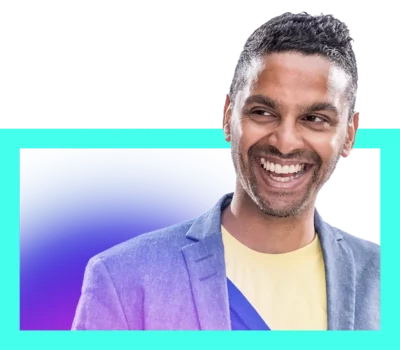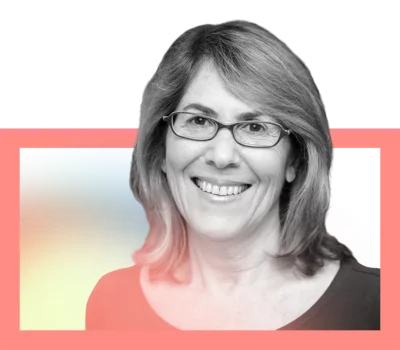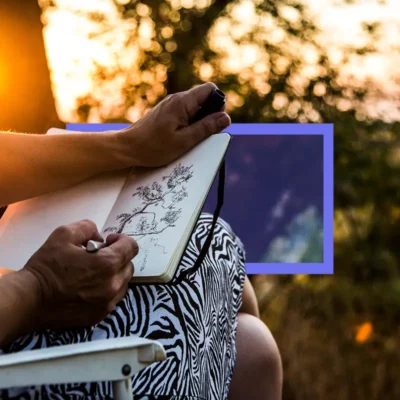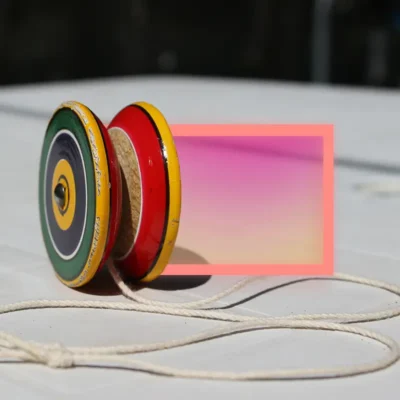Giving birth to a wiser self
One icy morning on a Vermont farm, Elizabeth Lesser is witness to a miraculous thing: the birth of a bleary, bleating baby lamb. Years later, as a midwife, she is still filled with this sense of awe and wonder at every birth. It’s through that process of coaching new life into the world, she learns how to sit through the difficult – even the painful – moments in her own: a divorce, a new career, even death. She begins to understand that we must all stay open to the wild pulse of life to give birth to our wiser selves.


Table of Contents:
Transcript:
Giving birth to a wiser self
ELIZABETH LESSER: All of the things we humans resist most – pain, unpredictability, lack of control, fear of the unknown – these are served up in labor. And not just literal labor. Childbirth teaches me to stay open. Through all the difficult transitions I meet over the years: when I go through a painful divorce; when I transition from being a midwife and become an entrepreneur, a teacher, a writer; when my kids grow up and leave home. And of course, the biggest transition of all – death. When my father dies at a ripe old age, and my younger sister dies way too young. Even death is a birth of a different order. Even loss can bring gifts of new life.
ROHAN GUNATILLAKE: Elizabeth Lesser is an author and co-founder of the Omega Institute, the influential center for holistic education in upstate New York. And it’s a place I have great fondness and appreciation for. I spent a weekend there as faculty on a course last summer and was so taken, yes, by the beauty of the space, but most of all by the generosity of the people there. Today, Elizabeth shares a Meditative Story in which she learns to sit through the difficult – even painful – moments from her years as a midwife, and go on to birth a whole new openness in life.
In this series, we combine immersive, first-person stories and breath-taking music with the science-back benefits of mindfulness practice. From WaitWhat and Thrive Global, this is Meditative Story. I’m Rohan, and I’ll be your guide.
The body relaxed. The body breathing. Your senses open. Your mind open. Meeting the world.
LESSER: The first time I witness a birth, I’m just a kid. It’s a cold, windy morning – springtime in Vermont. Snow still in the hills, maple syrup buckets hanging from the trees. I can see my breath in the air as I trudge down our dirt road with my father and three sisters.
It’s lambing season on our neighbor’s farm, and as we approach the muddy paddock, we hear a ewe, a mother sheep, bleating loudly. She’s in labor, and her lamb is stuck in the birth canal. We stand outside the fence, kicking at little patches of ice, watching the farmer trying to deliver the lamb. He digs his heels into the mud, reaches his arm up inside the ewe, and pulls hard. The ewe bleats even louder. Finally the lamb’s head appears. The farmer gives one more pull, and the little lamb slithers out and lands on a blanket of fresh hay. I am spellbound by the miracle before me.
A new life has arrived. Still wet from the birth, the lamb stands on shaky legs, looking out into the greening pasture. The mother licks the newborn clean, until its wool becomes fluffy and white. Just minutes before, the ewe was in pain, the baby in danger, but now all their effort is behind them. A warm, hopeful feeling fills me. I don’t know what to call it. It feels both other-worldly, and at the same time, wildly alive. It feels like love – love for the lamb and the ewe and the farmer; for every creature born into this world.
I know little about my own birth, something about a Catholic hospital where I am delivered by nuns who scold my mother for making “animal sounds” during labor. No one talks about being born – or about dying – in my house. My mother goes off to the hospital and returns home a few days later with a new baby sister. My grandmother leaves in an ambulance and is gone forever. Where did she go? Where will I go when I die? And who was I, and each of my sisters, before we were born?
I want to talk about this but there’s no one in my family who wants to ponder the big questions with me. My parents greet my existential angst with amused shrugs. My sisters call me the “weird one” because I tag along with my neighbors to church. I am looking for answers.
What I witness this morning at the birth of the lamb doesn’t answer those big questions, but that feeling of love, that sense of awe, it’s like a compass pointing me toward some kind of truth.
GUNATILLAKE: Can you see a young Elizabeth standing there, her whole being alert and enlivened by the birth, the cold morning air on her face? Can you echo some of that aliveness here, now?
LESSER: I try to follow that compass as I grow up, leave home, go to college. I’m in my last year of school, in San Francisco, living with my boyfriend, when I get to witness my next birth. Each evening when he comes home, he tells me about his work in the birthing room. He describes the process of labor and delivery in detail. I beg him to let me see a birth. On-call one night, he somehow finagles it so I can scrub into a cesarean-section, the surgical procedure used instead of vaginal delivery.
I stand in the back of the sterile, cold operating room, watching the nurses in their blue scrubs prepare for surgery – donning their gloves, arranging the shining instruments, assisting the anesthesiologist as he hooks the mother up to the blinking machines. It’s the opposite of a muddy paddock in Vermont, but I’m filled with the same expectant feeling.
My boyfriend warns me to avert my eyes as the surgeon makes a six-inch incision in the mother’s abdomen, but I want to see everything. I’m mesmerized as the baby is lifted out of the mother’s belly, still nestled within the amniotic sac. Then the surgeon cuts the sac open, and suddenly a new little being is with us. The nurse hands the baby to its father. The father cries, the baby cries, and when the mother hears her newborn, she cries too. The father brings the infant to her. She covers its face with kisses. In an instant, the cold sterile room seems warm, suffused with that otherworldly yet super-alive feeling. I recognize it right away: the spring day in Vermont, the ewe and her lamb, the mysterious connection between pain and love, struggle and life.
My boyfriend and I get married. He’s a doctor now, and I am training to be a midwife. We move to a commune in upstate New York. I’m still searching for answers to those big questions from my childhood, but now I have like-minded friends who actually want to explore those deeper questions too. I’m no longer the weird one; or maybe I’ve just found my tribe.
Soon my husband and I begin doing home births in the area. The calls often come in the middle of the night. Tonight, there is a blizzard. It’s freezing outside. It’s freezing in the car. But I have no time to wait. The road is dark and empty; there are no lights in the homes I pass. My car’s headlights illuminate swirling snow. It’s hard to see where I’m going. A red fox darts across the road and disappears into the deep woods. I feel a thrill go through my body, a connection to the wild pulse of life. It’s the same thrill I feel when I arrive at the birth. I sit breathing with the mother for hours and hours, coaching her to work with the labor, to say yes to the wild pulse of life coursing through her body, to stay open and patient through the powerful, painful contractions.
Patience, openness, trust. Relaxing when things are out of our control. Saying yes to the struggle, yes to the stretch, yes to the changes. These aren’t things most of us are very good at. My first reaction when things get difficult is usually a big fat no! But if childbirth teaches me anything, it’s that it is wise to work with life, even when things are painful, especially when they’re painful.
When I lead my prenatal classes, I teach the expecting mothers and fathers all about the cervix, that feisty little muscle at the base of the uterus. “Your cervix must stretch from a tight little knot to the size of the baby’s head,” I tell the wide-eyed moms. “This is going to hurt. Each time a contraction begins, your job is to help your cervix to do its job. It’s job is to open. If you tighten with the pain, you’re slowing the labor, you’re increasing the pain. If you relax, if you say ‘welcome’, if you trust the process, you’re doing your job.” And I teach them the midwife mantra: Open, open, open.
No matter how many births I attend, or how long the labor extends, or how many times a mother almost bites my head off when I tell her to welcome the contraction, childbirth never loses its magic for me. Every time I deliver a baby I get that feeling again, that warm, strange, and wonderful feeling, as if a window opens and I catch the scent of something expansive and true.
It isn’t lost on me, however, that I have yet to experience giving birth myself.
I go into labor in the middle of the night, in New York City, at my in-laws’ apartment. I am determined to make the 3-hour journey north. I want to have my baby at home. My husband drives us up the deserted highway, fast, but not too fast. He navigates the back roads of upstate New York, the twists and turns, the deer crossing the road, their black eyes shining in the moonlight. My water breaks in the car. The contractions grow stronger. By the time we arrive home the pain is overwhelming.
“How long is this going to last?” I cry as the labor goes on and on. “I can’t take one more minute! How much longer?” I almost laugh at myself – I sound just like every woman I’ve ever helped through labor.
“Look at me!” my midwife orders. She takes my hand. “Now, remember, the pain is your cervix opening. Don’t fight it. Work with it. Say ‘welcome’ to the contraction. Say ‘thank you’ to your cervix.”
I want to bite her head off, but I know she’s right. I know my anatomy; I know if I tighten in fear, my cervix tightens too, and the pain gets worse, and the labor longer. I feel the next one coming. I feel the fear rising, the clenching, the fight. I look into my midwife’s eyes. There’s so much love in them, so much trust in the process of birth, in the purpose of the pain. “Stay open,” she says. “Say this with me: Open, Open, Open.”
I say it, I cry it, I curse it out loud: Open, open, open. I keep saying it for several more hours and then my midwife tells me it’s time to push, and I feel the baby’s head descend and crown. I push hard, I make my animal sounds, and just like that newborn lamb on the cold spring morning in Vermont, and the first birth I saw in San Francisco, and like every baby ever born, my baby emerges into the world. And my heart opens, opens, opens.
GUNATILLAKE: What a moment. Let’s breathe with Elizabeth in it. No need to force it. Feel the breath come into the body. Feel the rising of the belly and up into the chest. And the release of the out breath, picking up any tension on its way out. Breathing in, and knowing that you’re breathing in. Breathing out, knowing that you’re breathing out.
LESSER: All of the things we humans resist most – pain, unpredictability, lack of control, fear of the unknown – these are served up in labor. And not just literal labor. Childbirth teaches me to stay open through all the difficult transitions I meet over the years: when I go through a painful divorce; when I transition from being a midwife and become an entrepreneur, a teacher, a writer; when my kids grow up and leave home. And of course, the biggest transition of all – death. When my father dies at a ripe old age, and my younger sister dies way too young. Even death is a birth of a different order. Even loss can bring gifts of new life.
I sit quietly by my mother’s bed one night, in her house in Vermont, just up the road from where the lamb was born all those years ago. My mother is dying. She’s been ill for some time, but she is a stoic. My sisters and I had no idea how far her illness had progressed. Up until a few months ago, she was still the intellectual powerhouse she’s always been, editing her town’s newspaper, sending me carefully clipped articles from the New Yorker magazine. Tonight, she’s barely responsive. We take turns sitting by her bedside.
I am confused about how best to help her, or how long the process will take. I’m angry that she didn’t give us the chance to say goodbye, heartbroken at the thought of losing her, and up against the biggest of the big mysteries: Where will she go when she takes her last breath? I’ve been a seeker my whole life and I’ve never landed on a definitive answer to that one, but I have found a way to abide more peacefully with all the big questions, and better than that, to be curious, brave, and open in the presence of the grand mysteries of birth, and life, and death.
As I take my mother’s hand, I realize what I need to do. I’m a midwife again, and this is now a different kind of labor, the bookend to delivering life. Now I am letting it go, as sorrowful as that might seem. But who knows what’s on the other side of this transition, this difficult passage, this hero’s journey? I sit with my mother all night as she struggles to let go. I labor with her. I travel with her to the edge. I whisper in my mother’s ear, “Stay open, Mom.” I repeat the midwife mantra for her, and for myself. Open, Open, Open.
Her breaths slow. The space between them gets longer. My sisters join me. The sun is rising. The room fills with light, and also with that strange and wonderful feeling. That expansiveness that feels like love. The space is vast. The window is open.
I have had many opportunities since my mother died to dust off that midwife mantra and to remind myself to stay open, hopeful, patient, present. And not only in my personal storms and messy conflicts, but as a citizen of my country and of the human family. Political upheavals, environmental disasters, global pandemics. Our world is always changing. I learn the same truths over and over: If I resist the changes, if I give in to fear, I spin my wheels. If I say no to the pain, I create more of it. If I turn away, I lose my chance to help, to heal, to grow. But if I stay open to the wild pulse of life, if I welcome the stretch, I can give birth to my wiser self. The window opens and that strange and wonderful feeling fills my sails with strength for the next leg of the journey.
Rohan’s closing meditation
GUNATILLAKE: An idea in Elizabeth’s story is really sticking with me. It’s the one about how sitting with our pain isn’t something we tend to do: keeping the faith, even when we’re profoundly out of control.
For many of us, this is a time which feels out of control, without ground, and with discomfort. So if you feel up to it, and I do mean that, let’s do a meditation which instead of running away from the difficult, turns to face it. And see what happens.
If you’re anything like me, when caught up in some difficult emotion, our minds can really run away from us, agitated, frantic. Something we can do to help settle down and see things more clearly is to pay attention to our bodies and take a break from our thoughts.
With every emotion or mind-state, there are often feelings that go along with it in the body. Recognizing what these are can help ground us, and can soften any difficulty we are experiencing.
So here we go. Closing your eyes if it’s safe to do so, what sensations can you feel most strongly in your body? Given the stresses of recent weeks, there is likely to be something physical that feels hot or energetic or tight. Don’t worry about your thoughts for now. Let’s just pay attention to the body.
Maybe there’s heat somewhere in the body. Pulsing, hot, busy heat. It’s ok. Just look at it and give it some space. Letting the heat be there and not pushing it away, feeling the energy of it.
Open open open.
Maybe there’s some tightness somewhere in your body. Maybe in the front of your body, a classic place for holding tightness. We each have our own classic place for holding stress. For some it’s the belly, for others it’s the chest, the jaw or the face. For me it’s definitely the shoulders and the jaw. See which area feels most tight and give it some space. Letting the tension be there and not pushing it away. Open open open. And if it wants to relax then letting it do that.
How is your breath in this moment? It’s ok. No need to try and control it, just allow it some space to settle down if it wants to. Open to how it is. Because the body mirrors the mind, feeling what is in the body during stress may mean feeling unpleasant sensations. But the way this works is that not only does the body mirror the mind, the mind also mirrors the body.
So when you relax the body, the mind will follow. If there’s heat, feel it and give it the permission to relax. If there’s tension, know it and give it the permission to relax. If your breath is all over the place, allow that and give it a chance to settle down. Turning towards the difficult. Not pushing it away. And if it feels ok, being open to it. If you can, even allowing yourself to smile.
Remember that even in the most difficult circumstances, when the world seems to be turning inside out, you always have the option to drop into the body and let whatever difficult emotion you’re feeling play itself out that way. It’s not always an easy ride but with practice, it‘s a skill that can really help. And when you get more familiar with how your body normally reacts to challenges, you learn to be more and more open to those sensations. Your resilience will grow, breath by breath.
Thank you again, Elizabeth – and thank you.





